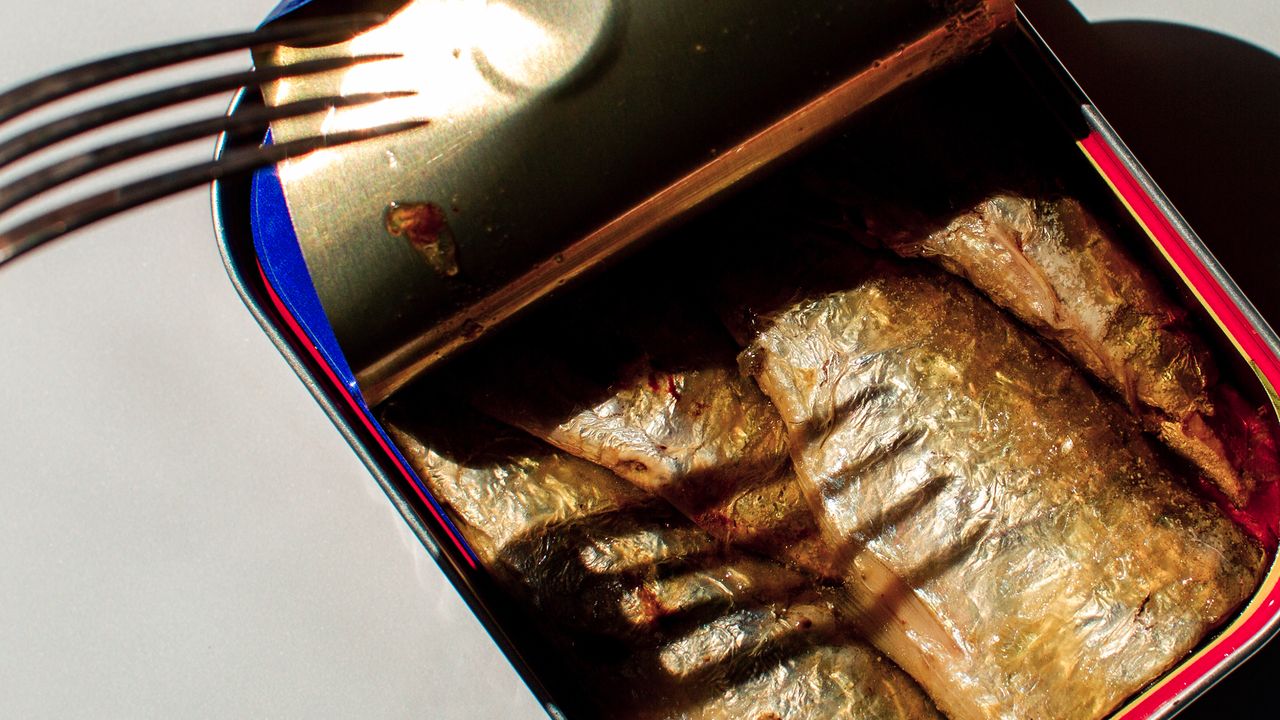
Tinned fish have always been a convenient way to enjoy seafood, and they’re a staple in cuisines of many different cultures. But in the States, the consensus on the tin-ensconced food has been less than flattering over the years. Besides Jessica Simpson asking the iconic age-old question, “Is it chicken or is it fish?” of her canned tuna, the mainstream consciousness has largely ignored tinned fish as a desirable meal option. But of course, leave it to TikTok (or TinTok as tinned fish lovers like to call it) to give that bodega can of sardines a complete rebrand.
According to a report by consumer data researchers at Spate, tinned fish’s popularity has gone up 91% year over year on TikTok alone, helped along by a few factors. There’s been an aesthetically pleasing packaging makeover by way of Fishwife’s fun vintage-inspired designs. There’s also been increased transparency around ethical sourcing, which attracts those environmentally conscious buyers—Wild Planet and Barnacle Foods are seen as clean brands that consumers can trust. Now, everyone seems to be gravitating—with gusto—towards pre-packaged fish for their meals
So: Is this all hype, or have we been looking at tinned fish totally wrong all this time?
Are tinned fish actually healthy?
The short answer to this is yes, tinned fish can be healthy. Registered dietitian-nutritionist Lauren Manaker affirms firstly that tinned fish refers to seafood that has been cooked, preserved, and packed in cans or tins, such as tuna, salmon, sardines, mackerel, or anchovies. Manaker says that tinned fish can hold the same nutritional value as fresh fish, as it is packed with high quality protein, omega-3 fatty acids, vitamins, and minerals. The key is to make sure you’re choosing options that aren’t high in sodium levels or have added oils—check the label!
The Benefits
The many benefits of tinned fish include:
Rich in Omega-3 Fatty Acids
Depending on the fish, Manaker says that tinned fish can be rich with omega-3 fatty acids, which are known to support heart and brain health, reduce inflammation, and may improve your mental wellbeing.
A Source of High Quality Protein
Tinned fish is also a great source of protein, which is known to help build and repair tissues and keep you feeling full.
Packed with Other Essential Nutrients
Manaker says that you’ll also find minerals like calcium, vitamin D, and selenium in tinned fish. Calcium and vitamin D are known for supporting bone health, while selenium can support your thyroid and immune function.
Convenient and Affordable
On a practical level, Manaker says that tinned fish is one of the easiest and most budget-friendly ways to incorporate nutrients into your diet. You don’t need to cook tinned fish (which she says makes it convenient for those who don’t know how to cook fish) and can be added to whatever foods you like. “[It’s] perfect for those who want to enjoy seafood without the hassle of preparation or cleanup,” she says.
Has a Long Shelf Life
Manaker says that tinned fish has a long shelf life and makes for the perfect food to meal prep around. This helps reduce food waste, which is always a welcomed added bonus.
Versatile in Flavor
We love foods that work with a variety of different spices, herbs, and sauces. Manaker says you can easily incorporate tinned fish with whatever suits your personal taste preferences.
The Downsides
Manaker says to be mindful of the sodium content and what oils are being used in tinned fish, especially if you’re trying to maintain your blood pressure or dealing with certain heart conditions. It’s best to avoid highly processed products, which can be packed with heavy sauces and higher in fats, sugar, and sodium. She adds that tinned fish like tuna may contain higher levels of mercury and recommends choosing brands that test for mercury such as Safe Catch or look for types of tuna that are generally lower in mercury levels such as skipjack tuna. That’s particularly important to consider if you are pregnant too. The FDA advises two-three servings of cooked fish a week.
And when in doubt, think of this: “Remember the acronym SMASH (salmon, mackerel, anchovies, sardines, and herring) when choosing fish that are higher in omega-3s and lower in mercury,” she says.
How to Eat Tinned Fish
It’s pretty easy to incorporate tinned fish into your diet, so anything goes. “Tinned fish is incredibly versatile, so enjoy it however you like,” says Manaker. “It can be eaten straight from the tin as a quick protein-packed snack or incorporated into recipes for added nutrition and flavor. Toss it into salads, mix it with whole grain pasta, spread it on whole grain crackers, or add it to soups and stews. The nutritional benefits remain the same, so it really depends on your taste and routine.”
#Tinned #Fish #Healthy #Investigate






